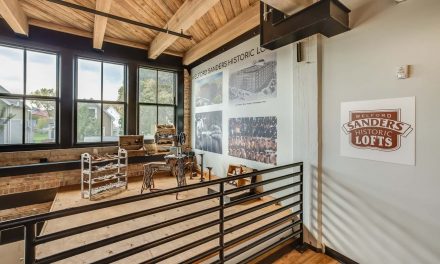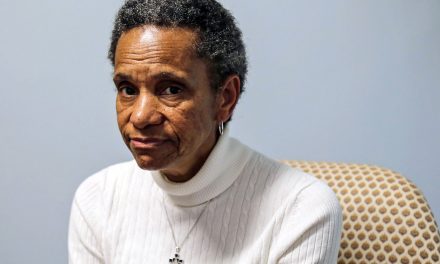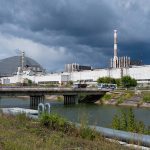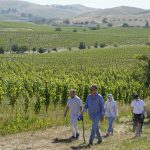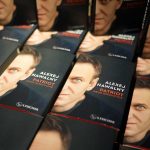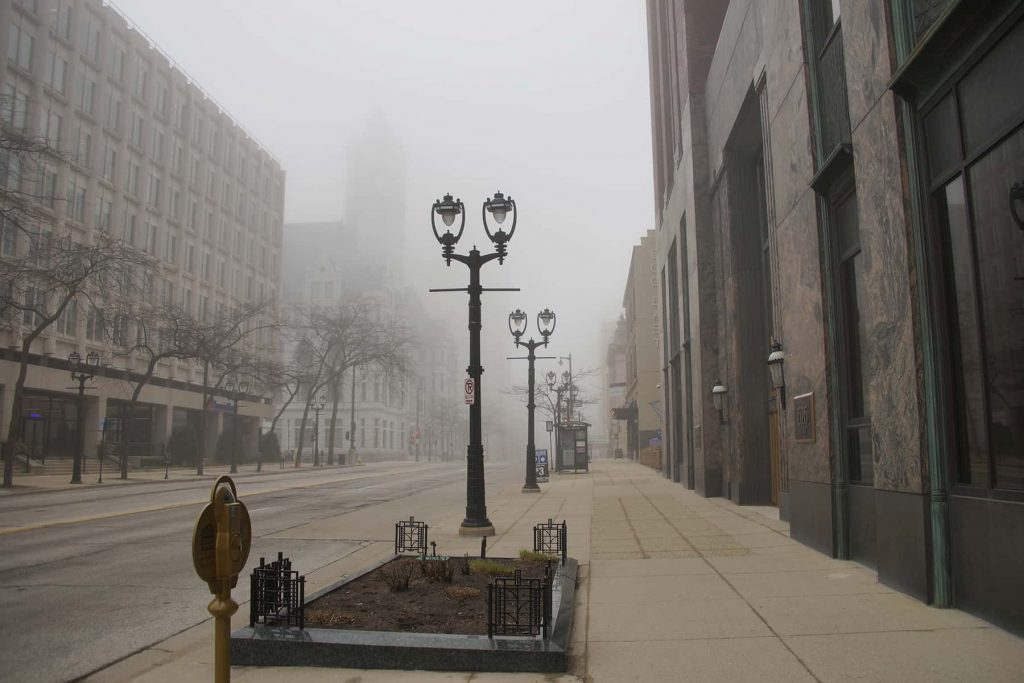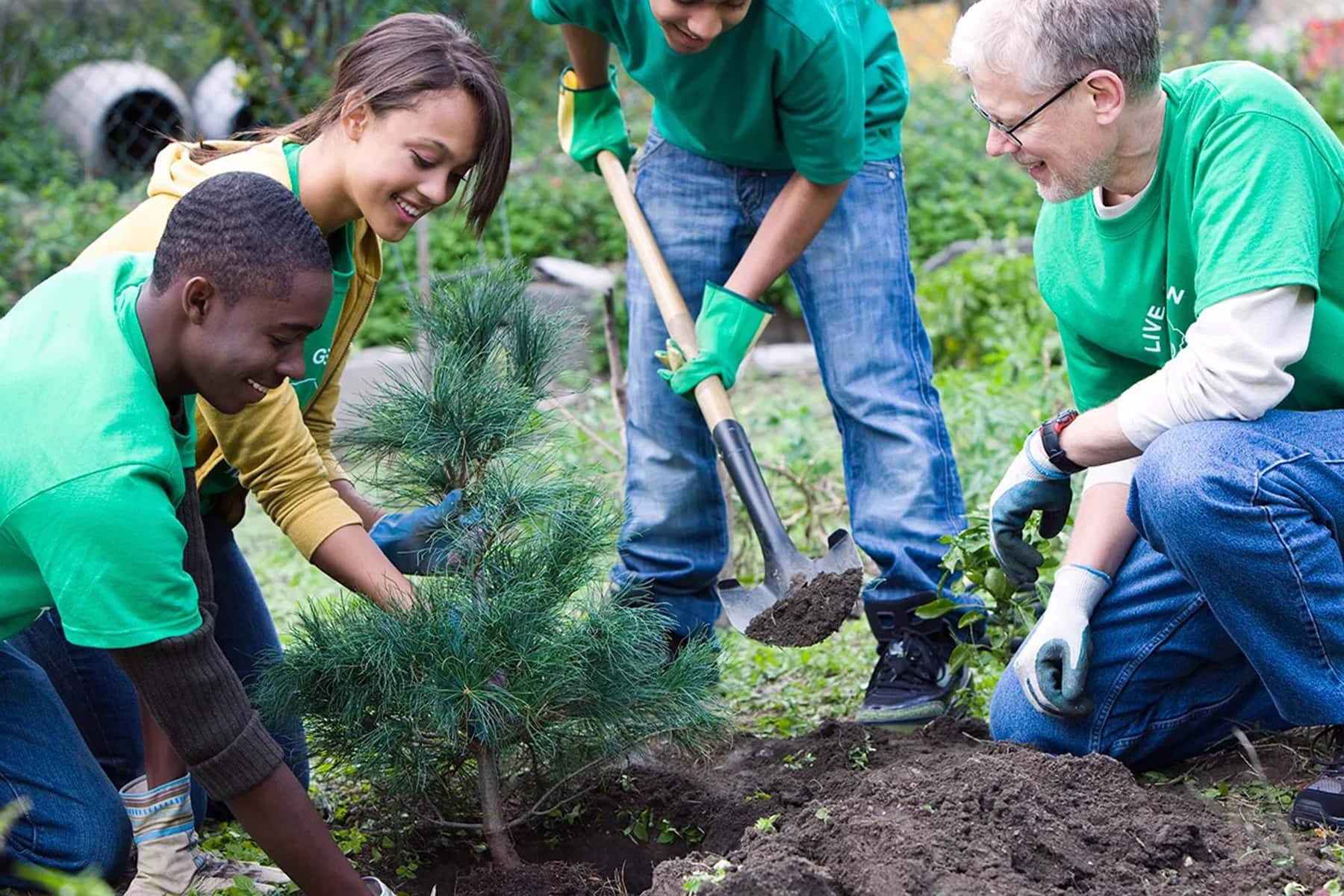
The term “urban forest” may sound like an oxymoron. When most of us think about forests, we may picture vast expanses of tall trunks and dappled sunlight filtering through the leaves, far from the busyness of the city.
But the trees that line city streets and surround apartment complexes across the U.S. hold great value, in part because of their proximity to people.
“Per tree, you’re getting way more value for an urban tree than a tree out in the wild,” said Mark McPherson, founder and director of a Seattle nonprofit called City Forest Credits. In an increasingly urbanizing world, cities are, after all, “right where people live and breathe and recreate.”
Trees — and urban trees in particular — provide enormous benefits. For starters, they’re responsible for producing oxygen and removing CO2 and other pollutants from the air. Urban forests in the U.S. remove an estimated 75,000 tons of air pollution per year. They reduce the impact of falling rain and encourage that water to soak into the ground, reducing flooding and erosion as well as preventing pollution from entering waterways.
And the shade they provide isn’t just good for picnics; trees absorb heat and release water vapor that cools the surrounding air. The U.S. Forest Service estimates that trees reduce the energy consumption needed to cool homes in the U.S. by more than 7%. To find out just how much one tree can do, you can even estimate the value of the benefits of a specific tree near you using this calculator developed by a collaboration of tree experts and nonprofits.
The trouble is that these benefits are not equitably distributed. “Nationally, there’s a trend for trees to follow wealth,” said Leslie Berckes, the director of programs for Trees Forever, a nonprofit environmental group that works with communities across Iowa and Illinois to plant and care for trees. She said wealthier communities tend to have more trees for a variety of reasons, including racist housing practices. “Redlining left a lot of scars on communities, one of those being less green space, less tree cover,” Berckes said.
And the results are life-threatening. In the absence of trees, these urban areas tend to be concrete—either buildings or sidewalks or streets. These impervious surfaces absorb heat during the day and then release it at night, preventing the relief of cooling temperatures, and creating urban heat islands. “People are getting sick or dying from heat,” Berckes said, “and their utility bills are going up. … Heat is the biggest killer from [a] natural disaster perspective.”
Building Community by Planting Trees
To better support the health of these communities, Berckes’ organization employs local teenagers to plant and care for trees. Trees Forever pays a starting rate of $10 an hour—higher than the state’s minimum wage of $7.25—and then bumps it up to $15 an hour for crew leaders. In addition, Trees Forever provides teens with professional development resources such as resume-building, mock interviews, financial literacy courses, stress management tools, and shadowing professionals in green jobs. Although COVID-19 has paused some of these activities, the organization sees this multifaceted support as an investment in a local workforce that will then have the knowledge and skills to continue the important work of tree-planting for building healthier communities.
Dawud Benedict, 18, has been planting trees with Trees Forever since the fall of 2020. He applied after hearing about a friend’s positive experience working with the organization. “It just sounded nice to do something more for Des Moines area,” he said. The work has taught him to appreciate trees and their benefits to the community and the world, as well as to work together as a group. He enjoys being able to drive past work sites and point out trees that he helped plant in his community. “I feel like I’m making a bigger impact,” he said.
In recent years, Trees Forever has endeavored to put equity at the center of their work through training and education, though Berckes admits that a lot more work must be done. “Our own staff is all White,” she said. “Iowa is a predominantly White state. When we go to work with some of these small towns, I bet the percentage of White people is 80 to 90-or-more percent.” Much of the group’s outreach has historically focused on door-knocking and connecting with groups like neighborhood associations, churches, and local businesses.
But Trees Forever’s traditional methods weren’t reaching Hispanic residents who moved to these communities to work in the meatpacking industry. So to make access to the benefits of urban trees more equitable, the organization is working to overcome language barriers and meet these community members where they are.
West Des Moines is home to three Microsoft data centers, and two more are slated for construction starting in 2021. In the corporation’s efforts to invest in communities that house its data centers, it funded Trees Forever’s work in 2019. And in 2020, the collaborative piloted a project that promises to put equity first.
The project, called the Impact Scorecard, is being rolled out in West Des Moines as well as Phoenix. The creator of the scorecard, Mark McPherson, said Microsoft was looking for high-impact projects, and his organization, City Forest Credits, developed a way to measure the impacts of trees on equity, human health, and the environment.
“As a society, we have not found a way to put natural capital on the balance sheet as an asset,” he said. “There’s no asset value to the trees; only an expense item.” As such, trees necessarily fall to the bottom of many city’s budgets, or off of them altogether. “Urban trees don’t just store carbon, they reduce stormwater, they improve air, they provide energy savings in terms of heating and cooling. They can, if done right, tremendously advance environmental justice—they provide human health benefits, biodiversity, bird and pollinator habitat, slope stability, and the list goes on. They are like utilities,” McPherson said. “They provide incredible services.”
Those services are immensely valuable to cities. They reduce the costs of doing all kinds of other work, including stormwater management, air purification, and water retention. Sure, some carbon markets put a dollar value on capturing CO2. But the problem, McPherson found, was that carbon markets couldn’t capture any of the values of urban forests specifically. Carbon credits are typically sold by the ton for huge acreages of forest. In the city, an individual tree isn’t going to store enough carbon to make a blip on these particular charts, but it has incredible value for countless lives.
So he teamed up with his older brother, Greg McPherson, a scientist emeritus with the U.S. Forest Service who founded the Center for Urban Forest Research. In the ’90s, he moved to Chicago to figure out how to quantify the value of the services that trees provide to the city, and he continues to refine benefit-cost analyses for trees. The Impact Scorecard is the latest outcome of this work. It aims to get corporations and other private funders to underwrite the costs of doing important community-led work through the planting of urban forests.
“That’s a critical part of environmental justice,” explains Mark McPherson, who, as a White man, said he works hard to avoid the tropes of White saviorism. “Not just, you beam in from your NGO office and plant trees,” but rather “to actually have these projects led by the local community.”
Letting Communities Lead
That’s what drives the work of Lydia Scott, director of the Chicago Region Trees Initiative. This partnership brings together 13 organizations—from the Morton Arboretum to the U.S. Forest Service, the Chicago Parks Department to the Department of Public Health—to leverage resources and expertise in support of the urban forest in and around Chicago. She said a lack of trees results in higher crime rates, lower property values, and higher temperatures.
To let communities lead, though, members of the initiative had to be willing to listen. Some neighborhoods, for example, didn’t want trees or actively removed them to prevent obstructing street lights because of safety concerns. Police departments, too, sometimes cite a need for open lines of sight on sidewalks and in parks. “This was an eye-opener for us,” Scott said. Trees are not universally appreciated or valued, and for legitimate reasons. That’s why her organization works within communities to show evidence of the ways trees can support a different dynamic.
But unlike a forest on public lands or a reservation, urban forests can’t be managed as a whole. Urban areas are a mix of public and private lands, so to plant trees requires the buy-in of a greater number of stakeholders.
“We know trees have a dramatic impact on quality of life,” Scott said. But all too often, she hears that “trees are a luxury we handle after everything else.” With COVID-19, being outside is more important than ever, and people are seeing and appreciating trees in a whole new way. But in some ways the work is made harder. City budgets are tight and meeting basic needs like housing is necessarily taking priority.
Measuring Impact
Here’s where the scorecard comes in. It matches communities who want to invest in their tree cover with private funders, such as corporations who want to make investments that have a measurable impact. That impact is broken down into three categories that emphasize the value of urban trees specifically: equity, human health, and environmental benefits.
Mark McPherson believes that urban forests are unique because they connect global atmospheric benefits with ecosystem benefits and resilience and mitigation benefits. “Very seldom do you get a climate action that fits all of those,” he said.
To look at the benefits of trees at scale, the Chicago Region Trees Initiative developed a map that breaks it down by neighborhood, indicating the percentage of land covered by impervious surfaces, the percentage of tree cover, and the financial benefit those trees provide the community.
Take, for example, the La Grange Park area of south Chicago. It has 47% tree cover and 30% impervious surfaces. The calculator estimates the community gains more than $750,000 a year from these trees. In contrast, Bedford Park, just to the south, has only 7% tree cover and 59% impervious surfaces. Their benefit from these trees is $300,000. But the calculator also estimates that the community could reasonably increase that tree canopy to 65% of the neighborhood’s land area—a ninefold increase—which would increase the benefits too.
Scott said the priority communities don’t always track exactly on racial lines. In fact, the two neighborhoods with the fewest trees, according to their assessment, were actually quite well-off financially, so the initiative pulled them off their list. They have the resources available to make change, but choose not to.
Instead, the initiative is prioritizing projects that put health and equity at the center. An assessment of educational facilities, for example, identified a list of 24 schools and 24 day cares in Chicago within 500 feet of an expressway. The initiative is using the Impact Scorecard to do air-quality testing and plant vegetative buffers as a means of improving air quality at each of them. A 2013 study found that adding a row of trees between a roadway and nearby houses reduced pollution levels in the houses by 50%.
“Many communities didn’t have the opportunity to do long-term thinking,” Scott said. But now, the ability to match community projects with funders can facilitate change in the communities who are ready for change.
“The trees in our neighborhoods tell a story about our society—one of equity,” Mark McPherson said. The story we’re trying to craft, he said, is one in which urban living is healthy, equitable, and connected with nature.
Brеаnnа Drаxlеr
Jоsе Luіs Pеlаеz
Originally published by YES! Magazine as Measuring Equity Through City Trees



